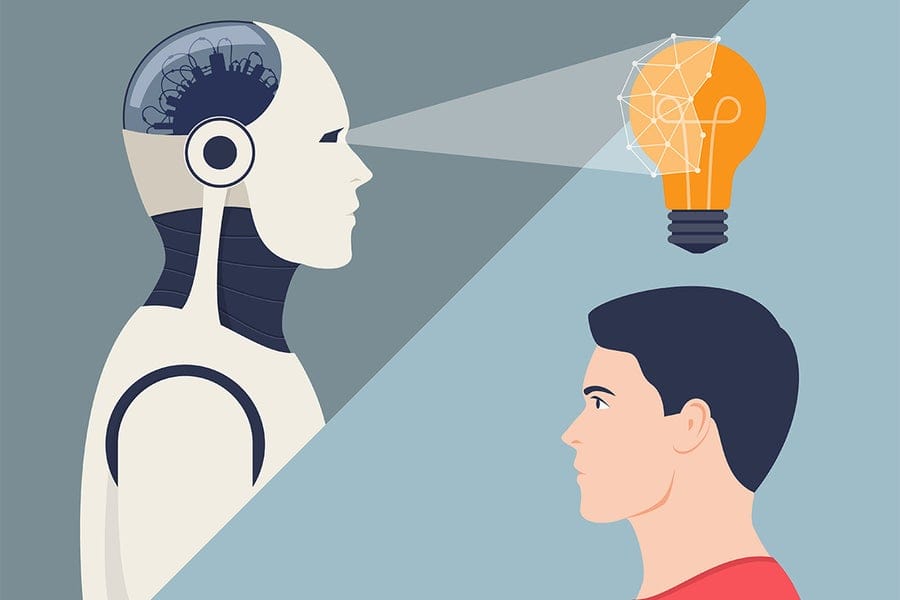If you woke up tomorrow and found that every single banknote and coin had vanished, how much would your daily life really change? For many people, not much at all. The reality is, most of our financial transactions already take place in a digital space. We tap cards against sensors, send payments via mobile apps, receive salaries as numbers that appear in online bank accounts.
Yet, amid this shift, a new form of money has emerged that doesn’t just live in the digital world — it redefines it: cryptocurrency. For some, it’s the future of finance, a decentralized revolution. For others, it’s a volatile gamble, a tech-fueled mirage. And somewhere between these two extremes lies the nuanced truth.
To understand the difference between “digital money” and “cryptocurrency,” we have to peel back the layers — not only of technology but of history, philosophy, and human behavior. This is not just a tale of banking systems and blockchain networks. It’s a story about trust, power, and what we believe money should be.
The Digitalization of Traditional Money
Digital money is older than it sounds. In the 1950s, credit cards started replacing cash for convenience. In the 1970s and 1980s, electronic payment systems emerged, allowing money to move as invisible pulses through banking networks. By the late 1990s, online banking was commonplace, and today, most currencies — dollars, euros, yen — exist far more in databases than in vaults.
When you log into your bank account and see a balance, you’re not looking at a stack of bills with your name on them. You’re looking at a record in a ledger controlled by a bank, backed by the central bank of your country. That number represents a claim — the bank owes you that amount, and you trust that it will make good on that promise when you want to spend or withdraw it.
In essence, digital money is simply traditional, government-issued currency represented electronically. Whether you transfer funds through PayPal, make a purchase with Apple Pay, or receive your paycheck via direct deposit, the underlying asset is the same: fiat currency, backed by a central authority.
The Centralization Factor
One of the defining features of digital money is centralization. Your balance exists because a trusted intermediary — your bank — keeps an official record. That bank, in turn, operates under the supervision of a central bank or monetary authority. This centralized model has advantages: stability, consumer protection, fraud prevention, and the ability to reverse mistaken or fraudulent transactions.
But it also means control. Governments and central banks can create more money, set interest rates, freeze accounts, and monitor transactions. In stable economies, this centralization is a source of trust. In unstable ones, it can be a source of fear. Citizens in countries facing hyperinflation, currency controls, or political crackdowns may see digital bank balances as fragile — numbers that could change at the whim of authorities.
The Spark of a Decentralized Alternative
In 2008, amid the wreckage of the global financial crisis, a mysterious figure — or group — using the name Satoshi Nakamoto published a nine-page white paper titled Bitcoin: A Peer-to-Peer Electronic Cash System. Its premise was radical: money could exist without banks, without governments, without central control.
Bitcoin, launched in January 2009, introduced the world to cryptocurrency — a form of digital asset that runs on a decentralized network called a blockchain. This wasn’t just digital money in the traditional sense; it was an entirely new architecture of trust. Instead of relying on a bank to keep a ledger, Bitcoin’s ledger was distributed across thousands of computers worldwide. Each participant could verify transactions independently, and no single entity could alter the history of the ledger without consensus.
What Makes Cryptocurrency Different
Cryptocurrency isn’t just “digital” because it exists on computers — so does your online bank account. The difference is in ownership, governance, and issuance.
In traditional digital money, the central bank issues the currency, commercial banks maintain balances, and your access to that money depends on their continued operation and permission. With cryptocurrency, ownership is defined by possession of a private cryptographic key. If you control the key, you control the asset — no bank, government, or company can take it away (unless you voluntarily hand over the key or it’s stolen).
The supply of many cryptocurrencies is algorithmically limited. Bitcoin, for instance, will only ever have 21 million coins. There is no central authority that can print more at will. This scarcity is part of its appeal — and part of its volatility.
The Role of Trust in Both Systems
At the heart of money lies a fragile but powerful concept: trust.
With digital fiat money, trust is placed in institutions. You trust that your government will honor its debts, that your central bank will protect the value of the currency, and that your commercial bank will keep your deposits safe. When these institutions function well, the system is smooth and reliable.
With cryptocurrency, trust shifts from institutions to technology. You trust the mathematics of cryptography, the transparency of open-source code, and the economic incentives built into the network. Instead of relying on a human promise, you rely on a protocol that, ideally, cannot be manipulated.
This change in where trust resides is profound. It’s why cryptocurrency enthusiasts often describe their movement in almost philosophical or even revolutionary terms. For them, it’s not just about making payments; it’s about reclaiming financial sovereignty.
The Experience of Using Each
In practice, using digital fiat money is seamless for most people. You swipe a card, scan a QR code, or click a button online. The transaction is processed by banks and payment processors in seconds or minutes. If something goes wrong — fraud, theft, mistaken charges — you can often get your money back through customer service or legal protections.
Cryptocurrency can also be fast and simple — particularly for cross-border transfers, where it often outpaces traditional systems. But it comes with higher stakes. If you send Bitcoin to the wrong address, there’s no customer service to reverse it. If your private key is lost, your funds are gone forever. The trade-off is control: you and only you hold the keys to your wealth.
Government-Issued Digital Currencies
Adding another layer of complexity is the rise of Central Bank Digital Currencies (CBDCs). These are digital versions of national currencies, issued directly by central banks. In some ways, CBDCs blur the line between traditional digital money and cryptocurrency. They are digital and may use blockchain-like technology, but they remain centralized and controlled by the issuing authority.
For governments, CBDCs offer efficiency, faster payment settlement, and the ability to track money flows in real time. For citizens, they could mean greater convenience — but also potentially greater surveillance.
The Question of Privacy
Privacy is a fault line between these systems. Traditional digital payments leave a trail — banks and payment processors know where and when you spend. Governments can access this information with the right legal tools.
Cryptocurrency transactions are recorded on a public ledger, which sounds less private — but the ledger records addresses, not names. However, once an address is linked to a person, their entire transaction history is visible. Privacy-focused cryptocurrencies like Monero and Zcash attempt to obscure transaction details, but their use is controversial and sometimes targeted by regulators.
CBDCs, if implemented without strong privacy protections, could give governments unprecedented visibility into individual financial activity. For some, that’s a tool for fighting crime and tax evasion. For others, it’s a dangerous step toward financial authoritarianism.
Volatility vs. Stability
One of the most obvious differences between digital fiat and cryptocurrency is volatility. The value of a dollar, euro, or yen fluctuates gradually, influenced by economic policy and market forces. Cryptocurrencies can swing wildly within hours. A coin worth $50,000 today might be worth $40,000 tomorrow — or $60,000.
This volatility is both a feature and a flaw. Traders and investors see opportunity; everyday users see risk. Stablecoins — cryptocurrencies pegged to fiat currencies — attempt to bridge the gap, offering the speed and independence of crypto with the price stability of traditional money.
The Broader Implications
The difference between digital money and cryptocurrency isn’t just technical. It’s political, philosophical, and deeply human. One is rooted in centuries-old systems of centralized authority, refined for the digital age. The other is born from a desire to build a parallel system, one that doesn’t require permission to join, doesn’t rely on trust in leaders, and is open to anyone with an internet connection.
Both have strengths. Both have weaknesses. And both are evolving — sometimes converging, sometimes clashing.
The Future of Money
It’s unlikely that one will completely replace the other. More realistically, we’ll see a hybrid landscape. Traditional digital money will remain dominant for everyday commerce, supported by the infrastructure of banks and governments. Cryptocurrency will thrive in niches where decentralization, censorship-resistance, or borderless transactions are most valued.
We may even see them merge in unexpected ways — CBDCs that borrow ideas from blockchain, or cryptocurrencies that integrate with traditional payment networks.
Ultimately, the question isn’t which is “better,” but what kind of financial world we want to live in. Do we value convenience over control? Stability over independence? Privacy over transparency?
In the end, the difference between digital money and cryptocurrency is a reflection of a larger tension in the modern world: the balance between centralization and decentralization, between trust in people and trust in code, between the familiar comfort of the old and the daring possibilities of the new.






